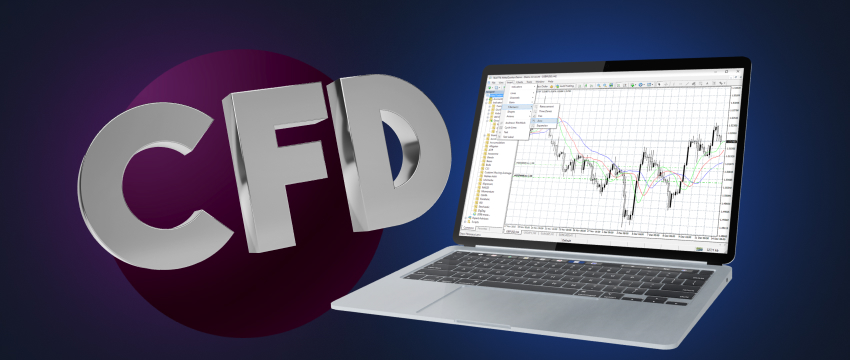First of all, in trading, there are two types of analysis most commonly used by traders: technical and fundamental analysis. Traders use both together and separately. However, there are two more types of analysis that are less popular: sentiment analysis and statistical analysis. Sentiment traders focus on market psychology and trader positioning. In contrast, fundamental traders analyze economic data and macroeconomic factors.
They rely on news, GDP, and interest rates. Sentiment traders and fundamental traders observe trader behavior and overall market mood. In this article, we will explore sentiment analysis. Additionally, we will discuss its differences from fundamental analysis.
Market Sentiment for Traders
Market sentiment reflects the sentiment or mood of traders. If traders feel bullish (optimistic) or bearish (pessimistic) about a currency or the global economy.
When trading sentiment, detecting trends is crucial. Furthermore, using these trends guides decision-making in sentiment analysis. Investor sentiment is being driven by positive economic data.
Additionally, important news affects national economies and global markets. Earnings reports also influence sentiment. Furthermore, geopolitics, like the war in Ukraine, play a role. Finally, market speculation can impact investor sentiment.
Bullish sentiment for Traders
When traders feel bullish, then the sentiment is positive, as investors believe prices will go up.
Bearish sentiment for Traders
A bearish market, on the contrary, occurs when prices are expected to fall, and investors feel pessimistic. Traders measure sentiment through price action and various sentiment indicators.

How does market sentiment differ from fundamental or technical analysis?
Market sentiment focuses on the emotional and psychological aspects of investors, rather than on actual data or patterns.
Fundamental traders use fundamental analysis to measure asset value using economic data. Additionally, earnings reports and figures are considered. On the other hand, technical analysis focuses on price movements. Moreover, patterns play a key role in technical analysis.
What drives market sentiment?
- Market perception depends heavily on economic data. This includes GDP reports. Additionally, inflation rates are considered. Moreover, labor market data plays a role.
- Changes in interest rates from central banks generate sentiment because they determine borrowing and investment possibilities.
- Geopolitical events such as armed conflicts, along with national elections, trade and international relations, as well as worldwide events, generate market optimism or uncertainty.
- Confidence within particular business sectors relies on the strength or weakness shown from the release of corporate earnings reports.
- Breaking news stories and headlines found in media generate emotional market reactions.
- Technical indicators help guide traders’ perceptions of future market moves through price trends, volume, and chart patterns.
How Does Market Sentiment Reveal the Emotions of Sentiment Traders?
The sentiment displayed in the market represents the underlying emotional state of people who participate in these markets.
The collective feelings of investors expressed through sentiment directly represent feelings of optimism and fear as well as greedy behaviour.
The market sentiment of participants drives asset prices upward when they feel optimistic whereas market prices decrease when they become fearful or uncertain. Analysis of emotional factors helps traders forecast market price transformations.
Social media and news platforms
Social media and financial news websites actively form how investors feel about market trends. The transmission of information through news channels and social media directly affects market sentiment because it induces fast emotional responses in traders.
Market breaking news causes swift price movements which can generate either bullish optimistic reactions or bearish fearful responses.
Interesting or important news and insights can spread rapidly across social networks through quick opinion sharing which along with speculative ideas and analytical statements can promote intense emotional reactions.
Surveys and Polls to Measure Market Sentiment for Sentiment Traders
- Consumer Confidence Index (CCI): Measures consumer sentiment regarding the economy.
- University of Michigan Consumer Sentiment Index: Reflects consumer attitudes and beliefs about the economy.
- Investor Sentiment Surveys: They gauge investors’ bullish or bearish sentiment.
Market sentiment indicators for traders
Bullish Percentage Index (BPI):
The Bullish Percentage Index (BPI) uses point and figure charts to identify stocks in a given index, which display buying signals thus measuring their percentage of bullish signals above others.
The readings from the Bullish Percentage Index (BPI) suggest bullish market sentiment whenever it exceeds 70% while indications of bearish behaviour emerge when the index falls below 30%.
Fear & Greed Index:
The Fear and Greed Index from CNN combines various market factors to measure sentiment between extreme fear and extreme greed on a single scale.
Market tops become evident during periods of excessive greed. Additionally, elevated market uncertainty presents chances to purchase assets. Panic-driven selling might devalue these assets.
MOVE Index:
The MOVE index provides information about U.S. Treasury market volatility by analysing options prices for measuring their implied interest rate and bond stability projections.
Put/Call Ratio:
Put/Call Ratio serves as a sentiment indicator through its analysis of put options trading against call options volume. Market sentiment is bearish when the ratio is elevated yet bullish when the ratio is down.
Market Volatility Index (VIX):
the Market Volatility Index or VIX operates as a “fear index” to measure market volatility expectations based on options prices.

Technical Analysis tools
Market sentiment becomes easier to view through analysing the patterns from different Moving Averages (MA) spanning 50 days to 200 days.
The 200-day moving average divides stocks into two groups through the Stocks Above/Below 200 DMA to demonstrate market direction strength or weakness.Stock prices located more than the 200 DMA demonstrate bullishness while a large number of stocks trading under this level suggests bearish market sentiment.
The Relative Strength Index provides information about price momentum speeds to indicate asset buying pressures or selling potential.
Market Breadth indicators
The Advance-Decline Line presents data about the relation between stocks that advance versus those which decline to determine market strength.
The New Highs/New Lows Index shows market sentiment by examining the stock count between achievements of new highs and new lows.
Volume indicators
Smart Money Index:
This index traces funds going in and out of the market, showing institutional investors’ behaviour. If the SMI goes up then investors are optimistic, but if it goes down, then it means they feel pessimistic.
On-Balance Volume (OBV):
Combining price and volume the OBV demonstrates how volume impacts price trends.
Accumulation/Distribution Line:
Measures the aggregate flow of money into and out of a security, indicating sentiment.
By combining these tools and indicators, traders can form a more well-rounded understanding of market sentiment, so they can make better trading decisions.
Limitations of market sentiment indicators for traders
Market sentiment indicators have some disadvantages such as the fact that emotions are subjective and can be irrational, or the fact that indicators may reflect past or current conditions and can be unreliable to forecast future movements.
Finally, they can also be too optimistic or too pessimistic, and can lead to false breakouts or breakdowns.
Risks when trading based on market sentiment
When trading based on market emotions, traders should be cautious and not be solely driven by impulsive and emotional biases.
Overreacting to news, relying on false signals from indicators, as we mentioned above, and being influenced by rumours and misinformation, rather than hard facts can lead to irrational trading behaviour.
Furthermore, trends that depend on sentiment may result in poor timing for entry and exit points, while trading in a affection-driven market could make it difficult to execute trades at the most optimal prices.
By focusing on passion can also increase the risk of losses during market corrections, so traders should develop a more long-term approach. Being influenced by herd mentality and feeling pressured to make a decision can also lead traders towards irrational decisions.
The best approach is to combine sentiment analysis with technical and fundamental analysis so fundamental traders and other traders can develop a more well-rounded view of the market and make decisions on a combination of factors including market sentiment, price analysis, and economic data.

Start trading with T4Trade
If you are just starting out and want to learn more about how to analyse and trading in the markets as well as access superb tips from our team of expert analysts, join T4Trade.
From free education to superior trading conditions and multilingual customer support, the forex broker equips you with the necessary tool to succeed in the forex and financial markets.
Disclaimer: This material is for general informational and educational purposes only and should not be considered investment advice or an investment recommendation. T4Trade is not responsible for any data provided by third parties referenced or hyperlinked in this communication.




